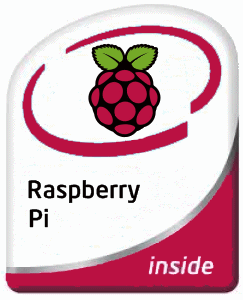 In this article several issues related to Raspberry Pi will be discussed. The format will be in a question and answer based manner.
In this article several issues related to Raspberry Pi will be discussed. The format will be in a question and answer based manner.
For more generic questions, please check the article: Miscellaneous Questions and Answers
General
Question: How can I speed up my Raspberry Pi?
Answer: You can speed up the Raspberry Pi using a technique called over clocking. Example values for the Raspberry Pi 2 Model B are:
arm_freq=1000 core_freq=500 sdram_freq=500 over_voltage=2
Change or add these values in /boot/config.txt,after reboot your ARM should run at 1000MHz and core and SD RAM at 500MHz.
Besides of that you can use the RasPi-tool at Raspbian (use menu option: 8 Overclock):
sudo raspi-config
Read more:
Question: How can I put a new image on the SD-card without leaving my chair?
Answer: Assumed you can reach your Raspberry Pi via SSH, follow these steps. Caution: Maybe it’s not a good idea to use WiFi and overwrite a mounted SD-card, but at least for me it worked.
- Do a bitwise copy of the disk image (here two partitions of a Rasbian via SSH to the SD-card (mmcblk0).
dd if=2015-11-21-raspbian-jessie-lite.img | ssh pi@raspberrypi sudo dd of=/dev/mmcblk0
- Wait – You don’t receive progress information
- When the connection is closed by remote host, reboot the Raspberry Pi (by unplugging the power cord).
Raspbian
Raspbian is a free operating system based on Debian optimized for the Raspberry Pi hardware. An operating system is the set of basic programs and utilities that make your Raspberry Pi run. However, Raspbian provides more than a pure OS: it comes with over 35,000 packages, pre-compiled software bundled in a nice format for easy installation on your Raspberry Pi.
Read also: Beginners guide to run Raspbian at your Raspberry Pi
Question: How can I login into a Raspberry Pi, running Raspbian?
Answer: Use SSH and connect to the IP-address of your Raspberry Pi. Use as username: pi and as password: raspberry
Question: How can I install the latest (security) updates?
Answer: Open a terminal window and execute the command:
sudo apt-get update && sudo apt-get upgrade
Question: How can I install Kodi (formerly XBMC)?
Answer: Open a terminal window and execute the command:
sudo apt-get update && sudo apt-get install kodi
Start Kodi by selecting:
Menu -> Sound & Video -> Kodi Media Center
